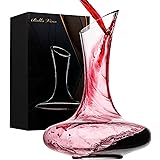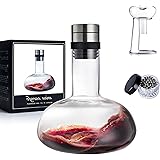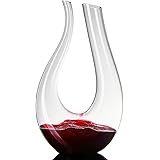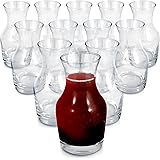Mastering Easy Food and Wine Pairing: Your Essential Guide
Learning the art of **food and wine pairing** doesn’t have to be an intimidating ordeal reserved for seasoned sommeliers in upscale restaurants. As explored in the video above, it is actually quite simple to enhance your meals and elevate your dining experiences by understanding a few fundamental principles. This comprehensive guide builds upon those essential insights, demystifying the process and empowering you to make confident wine selections for any dish. You can truly enjoy your next culinary adventure without any hesitation or self-doubt.The core philosophy of successful **wine pairing** often boils down to balancing and complementing the various elements present in both the food and the wine. Many people find themselves wondering whether to select the wine first and then plan a meal around it, or vice versa. Most casual enthusiasts tend to choose a dish first, then seek out the perfect bottle to match its unique characteristics. Regardless of your starting point, applying a few simple rules ensures a harmonious and enjoyable combination every time. This approach makes the entire process accessible and enjoyable for everyone involved.
To truly unlock the secrets of exquisite food and wine harmony, it is essential to focus on five key elements within your chosen dish. These crucial characteristics directly influence how a wine will interact with your food, creating either a delightful synergy or an unfortunate clash. By consciously evaluating these specific traits, you can confidently navigate the vast world of wine and select a bottle that truly complements your culinary creations. Understanding these elements transforms **wine pairing** from a guessing game into an informed and exciting decision. We will delve into each of these important elements in detail, providing practical examples and clear explanations.
1. Salt: The Unexpected Catalyst for Perfect Pairings
Salty foods possess a remarkable ability to transform certain wines, making them taste even more vibrant and refreshing. When encountering a dish with a prominent salty profile, the ideal wine accompaniment typically falls into one of two categories: high-acid wines or sweet wines. These two styles offer contrasting yet equally effective methods for complementing salinity, creating memorable and exciting taste sensations. Such pairings often surprise those new to the world of wine. For example, consider how the crunch of a salty snack can open up new dimensions in your chosen drink.
High-acid wines, like the effervescent Champagne, are particularly well-suited to combat the richness of salty dishes. The bright acidity in Champagne expertly cuts through the saltiness of classic pairings such as briny oysters, creating a clean and refreshing sensation on the palate. However, its versatility extends far beyond traditional fare; imagine the delightful contrast with something like salty fried chicken. The acidity slices through the fat and sodium, leaving your palate cleansed and eager for another bite of food and another sip of wine. This unexpected combination proves infinitely lighter and more sophisticated than a typical beer pairing, truly enhancing the overall dining experience.
Conversely, sweet wines create a beautiful “yin and yang” effect when paired with salty foods, offering a delightful contrast rather than a cleansing action. A classic example of this perfect balance is the pairing of a rich Stilton blue cheese with a sweet Ruby Port. The intense salinity of the cheese is beautifully mellowed by the luscious sweetness of the wine, creating a complex and satisfying flavor profile. Consider also the delightful combination of a nutty Tawny Port with salty pretzels; the interplay of sweet and savory notes provides an excellent appetizer or even a low-calorie dessert option. This harmonious balance highlights how seemingly opposite flavors can enhance each other dramatically.
2. Fat: Finding Balance with Rich Flavors
Fatty foods, with their often rich and creamy textures, require wines that can either cut through their richness or enhance their opulent character. Understanding how different wine styles interact with fat is crucial for making effective **food and wine pairing** choices. This particular element is significant because fat coats the palate, and the right wine can refresh it beautifully. A well-chosen wine will prevent the dish from feeling overly heavy or cloying, ensuring a balanced and enjoyable meal from start to finish. Exploring these interactions opens up a world of delicious possibilities.
Once again, high-acid wines emerge as champions when paired with fatty dishes, acting as a natural palate cleanser. A minimally oaked Chardonnay from regions like Mâcon or Chablis, known for its crisp acidity, provides an excellent contrast to rich, buttery foods. Imagine how it would beautifully complement a delicate sole served with a creamy butter sauce, or even a comforting mac and cheese. The wine’s vibrant acidity slices through the fat, refreshing your palate and making each subsequent bite of the dish taste as fresh as the first. This creates a more dynamic and less heavy eating experience, encouraging you to continue enjoying both the food and the wine.
Alternatively, fatty foods also find an exquisite match in wines that possess high tannin and elevated alcohol levels. These powerful components create a unique relationship where the fat in the food softens the tannins in the wine, allowing the wine’s fruit and complexity to shine through more brilliantly. A robust California Cabernet Sauvignon, with its firm tannins and higher alcohol content, is an archetypal choice. It feels perfectly at home alongside a succulent, fattier cut of steak, such as a ribeye, where the fat tames the wine’s grip. This bold red also pairs wonderfully with a classic hamburger, transforming a simple meal into a truly satisfying **food and wine pairing** experience, ideal for your next barbecue.
3. Acid: Matching Intensity for Perfect Harmony
Acid is a ubiquitous component in many dishes, derived from ingredients like citrus fruits (lemons, limes), vinegar-based sauces, and particularly tomatoes. When considering **wine pairing**, the golden rule for acidic foods is simple: the wine must be at least as acidic as the food, if not more so. Failing to match this intensity can result in the wine tasting “flabby” or dull, stripping it of its inherent vibrancy and balance. This crucial principle ensures that both the food and the wine maintain their intended flavors and characteristics. A harmonious acidic balance elevates the entire dining experience significantly.
When high-acid foods are on the menu, a high-acid wine is your best friend, as demonstrated by the Sangiovese grape in a classic Chianti from Tuscany, Italy. This vibrant red wine stands up beautifully to the acidity found in tomato-based dishes, making it an impeccable choice for spaghetti Bolognese or any rich pasta sauce. Its bright acidity also makes it a surprisingly perfect partner for good old-fashioned American pizza, particularly a New York-style slice. The robust character of Chianti not only matches the intensity of the food but also cleanses the palate, preventing any overwhelming sensations. This pairing truly showcases the power of matching acid levels effectively.
The success of this pairing strategy stems from a fundamental necessity: the wine’s acid needs to stand shoulder-to-shoulder with the food’s acid. If the wine’s acidity is lower, the food’s acidity will dominate, making the wine taste thin, sour, or flat, effectively muting its flavors. So, the next time you find yourself enjoying a late-night study session with some Domino’s pizza, remember to grab a bottle of Chianti. This simple choice will transform your casual meal into a perfectly balanced **food and wine pairing**, proving that elegant pairings are accessible to everyone, regardless of the setting.
4. Sweetness: The Golden Rule for Dessert Pairings
When it comes to pairing wines with sweet foods, particularly desserts, there is one non-negotiable rule: the wine must always be sweeter than the food. If the wine is less sweet, or even just as sweet, as the dessert, it will taste bitter, sour, or simply diluted. This crucial principle ensures that both the dessert and the wine contribute positively to the overall flavor experience. Understanding this “golden rule” is key to unlocking truly delightful and harmonious sweet **wine pairing** combinations. Ignoring this often results in a disappointing finish to an otherwise great meal.
A shining example of a wine that perfectly adheres to this rule is Moscato d’Asti, a delightful, semi-sweet, semi-sparkling, low-alcohol dessert wine hailing from Italy. While it gained some popular culture recognition, its true charm lies in its versatility and effervescent sweetness. Moscato d’Asti pairs exquisitely with light, fruit-based desserts such as grilled peaches served with vanilla ice cream, where its fruity notes complement the natural sweetness. It also creates a lovely harmony with shortbread cookies, especially those featuring a jammy fruit filling, as the wine’s fruitiness enhances the jam and matches the cookie’s sweetness level. The goal is to ensure a balanced sweetness that allows both elements to shine.
Unfortunately, several classic pairings often fall short because they violate this fundamental sweetness rule. For instance, many red wines, no matter how fruity, are simply not sweet enough to stand up to the richness of chocolate, resulting in a bitter metallic taste. Similarly, Champagne, despite its celebratory appeal, typically lacks the sweetness required to pair harmoniously with wedding cake, often making the wine taste acidic and unpleasantly sharp. These commonly accepted but flawed combinations highlight the importance of truly understanding the sweet **food and wine pairing** principle. Always ensure the wine’s sweetness exceeds or comfortably matches that of the food for the best results.
5. Spice: Taming the Heat with Sweetness
Spicy foods present a unique challenge and opportunity for **wine pairing**, as their capsaicin content can overwhelm delicate wines and amplify their alcohol. The most effective strategy for pairing with spicy dishes is to opt for wines that offer a delightful counterpoint: sweetness. Sweetness not only balances the heat but also provides a soothing sensation to the palate, creating a harmonious and enjoyable experience. This approach contrasts sharply with high-alcohol, high-tannin wines, which tend to intensify the burning sensation of spicy food. Choosing wisely ensures a pleasurable dining adventure.
An off-dry German Riesling stands out as an exceptional choice for spicy cuisine, particularly the vibrant and aromatic flavors of Thai food. The wine’s inherent sweetness and often subtle acidity beautifully temper the fiery spice, creating a pleasant “yin and yang” dynamic that refreshes the palate between bites. However, one of the most exciting and surprisingly complex pairings involves buffalo wings, as it elegantly touches upon several of the **wine pairing** principles we’ve discussed. The dish offers a multi-layered experience, allowing the Riesling to shine in various ways. This versatile wine handles the heat with remarkable grace.
With buffalo wings, an off-dry Riesling provides a brilliant interplay of elements: its sweetness tames the heat from the hot sauce, while its acidity cuts through the saltiness of the wings and the richness of accompanying blue cheese. Furthermore, the wine’s acidity provides a refreshing counterpoint to the fattiness found in both the wings and any mayo-based dips. Even the vinegar in the hot sauce finds a match in the wine’s own acidity, creating a comprehensive and satisfying **food and wine pairing**. So, the next time you are hosting a Super Bowl party or simply craving some wings, surprise your guests by breaking out a bottle of Riesling. You will undoubtedly become the **wine pairing** champion of the evening, demonstrating sophisticated yet simple taste.







